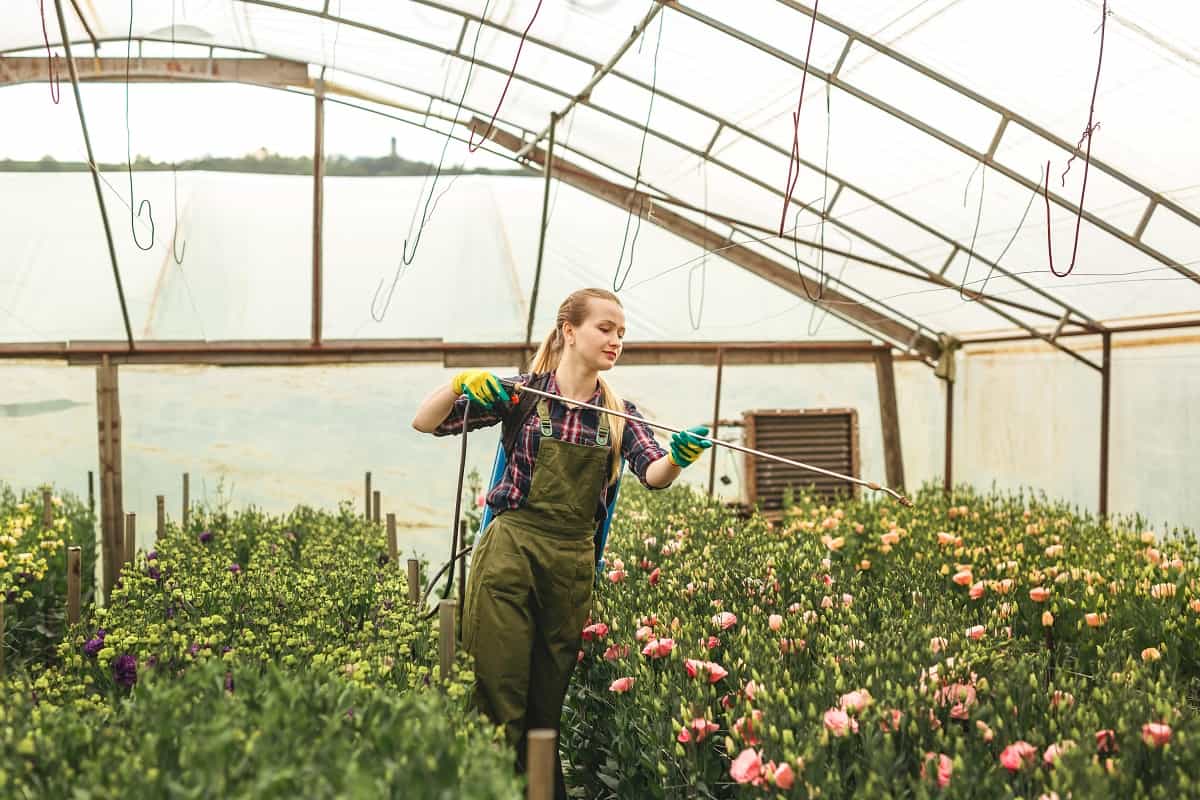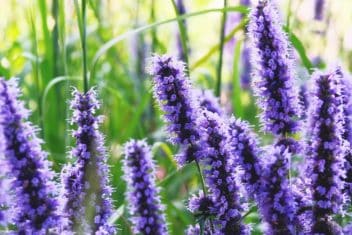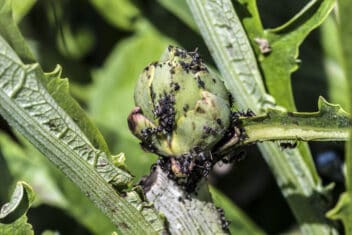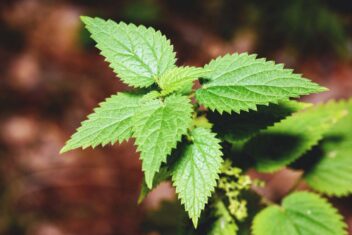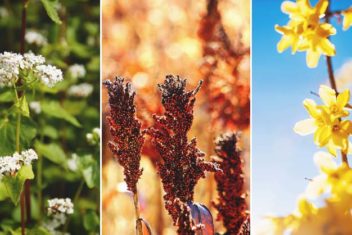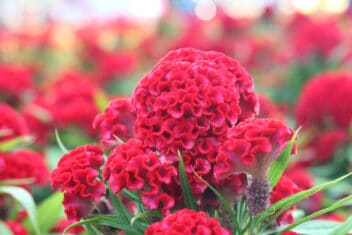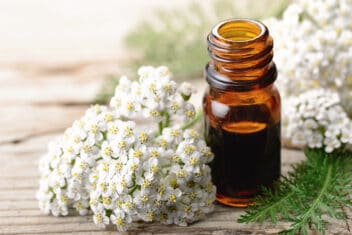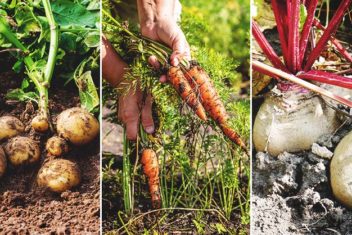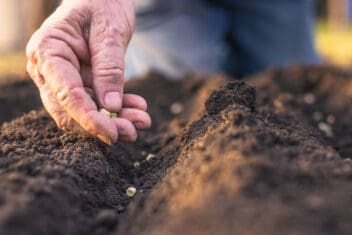In my outside garden, fertilizing plants is quite easy. Mostly, all I use is mulch, compost, and a few organic fertilizers like feather meal and bone meal. However, my greenhouse plants require more frequent and comprehensive fertilizing to get good results.
In large part, this is because the greenhouse is a unique, protective environment that allows plants to grow at more optimal rates than outdoor grown plants. Still, that protective environment also alters plant nutrient needs.
If you want to learn some of the key challenges of fertilizing plants in a greenhouse and simple solutions to use for managing fertility inside a greenhouse, let’s get started.
Key Challenges of Fertilizing Greenhouse Plants
There are a few big reasons why soil fertility can be tricky to manage in a greenhouse environment.
Challenge 1: Your Plants Don’t Grow In Soil
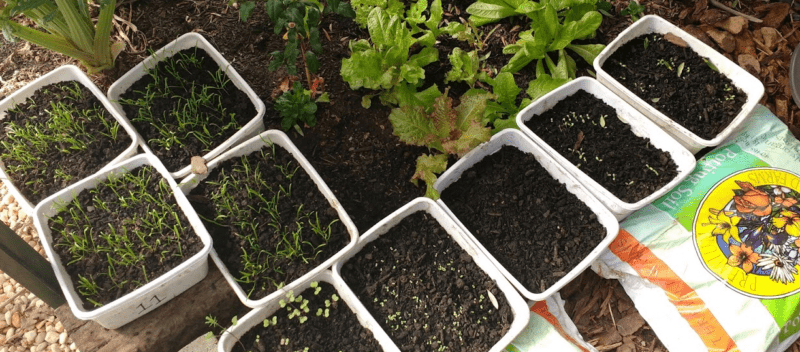
The first, and biggest challenge, is that much of the time greenhouse gardeners are gardening in something other than soil.
Generally, these mixes are made with a stable organic matter like peat, coconut coir, or partially decomposed bark. They also have an additive for aeration like perlite, vermiculite, or sand. Finally, they include a nutrient source like compost or leaf mold.
At first planting, these mixes are in the right proportion for ideal plant growth. However, over time, as the compost decomposes and plants use those nutrients, the composition of the mix changes. That alters pH, causes some nutrients to turn inorganic, and can even create a toxic overload in some nutrients.
So, the first thing you really need to understand to maintain good fertility in your greenhouse is how your specific potting mix is likely to influence nutrient uptake in plants.
Let’s take a closer look at some of the more common potting mixes and their potential nutrient problems.
1. Peat
Peat mixes may become more acidic as the compost in the mix decomposes and the peat becomes a more dominant ingredient. As the pH acidifies, then the way plants uptake minerals changes.
For example, phosphorous, calcium, and magnesium become less available to quite a few plants when the soil pH drops below 5.5. Meanwhile, iron, manganese, boron, copper, and zinc become more available to plants. In fact, they can become toxic – especially iron.
2. Coconut Coir
In coconut coir, the pH remains more stable as compost decomposes than in peat mixes, though it may drop some. Still, it may cause other changes in mineral availability.
For example, coconut coir is particularly good at binding with calcium, magnesium, and iron. So, as the compost decomposes, it may bind with these nutrients, making them less available to plants.
- Calcium deficiency can result in stunted plants that don’t produce new growth.
- Magnesium shortages can lead to chlorosis. In a greenhouse, where plants already receive their light filtered through polycarbonate panels or glass, that can mean serious problems for root development and photosynthesis.
- Iron deficiency can also lead to chlorosis and also to scorched leaf appearance and plant cell death.
Additionally, some coconut coir is processed in saltwater and retains high salt content as a result. That salt is diluted and stable initially when the potting mix is new. Still, again, as the compost decomposes, and the composition changes, salts from the compost added to salts from coconut coir can create a toxic environment for plants.
3. Bark Mixes
Bark mixes, which are often used for acid-loving plants or epiphytes like orchids, tend to have a lower pH naturally. The plants that grow well in bark mixes have the capacity to uptake nutrients at lower pH levels than most vegetables. However, the challenge with bark is that compared to peat and coconut coir, it decomposes quickly.
When the bark decomposes, it breaks down into a compost that raises the pH of the mix. So, when that happens the potting mix can become too alkaline for acid-loving plants to uptake nutrients well.
Best Soilless Solutions for Greenhouse Plants

The good news is that there are some easy fixes for managing these common potting mix problems in greenhouse-grown plants.
Solution 1: Pot Up
An easy way to help maintain a well-balanced potting mix is to pot up more often. This is why people who start seeds may begin a sterile medium. Then, they pot up to a large cell. Finally, they might end with a 3-4-inch pot before transplanting to garden beds.
People who use soil blocks do this as well by putting small blocks inside larger blocks at regular intervals. Whereas if you simply started in a larger pot, the compost would decompose more rapidly with regular watering and contact with plant roots and any fertilizers used for plant health.
This is why strategically potting up to new soil is often better than just using a larger pot, to begin with. Of course, there are some exceptions. With many seed spices, I find small cells stunt growth. So I start those directly in larger pots. However, I take extra precautions in my fertilizing.
Solution 2: Top Dress
Potting up works well for plants you intend to transplant. However, for plants that will live long-term in the greenhouse and are already in ideal sized pots, you can top dress with compost or mulch.
- For peat mixes that tend toward becoming more acidic, top dressing your pots with compost can help stabilize the soil pH.
- For coconut coir mixes, compost is also useful. However, if you can specifically use vermicompost, that works even better for remedying issues in coconut coir mixes.
- For bark mixes, mulching with bark chips and incorporating the new bark around the edges can help.
Solution 3: Use Humic Acid
There’s one more solution that I have found effective to help stabilize plant nutrient uptake in all sorts of different potting mixes. That’s using humic acids as part of your regular plant care routines.
Humic acids don’t impact the pH of mixes. Still, they do seem to stabilize all my plants’ abilities to uptake nutrients – even when the pH becomes less than ideal. In my experiments, regular use of humic acids helps plants tolerate a pH of up to 1.0 out of the ideal range without showing signs of ill-health.
I’ve had the best luck with the granular humic acid used at the time of planting. Then I also put granular humic acid in with my vermicompost when I make my aerated compost tea as fertilizer. I use that to water and also foliar spray plants, especially when they are putting on lots of new leaf growth.
Challenge 2: Your Plants Need Nutrients
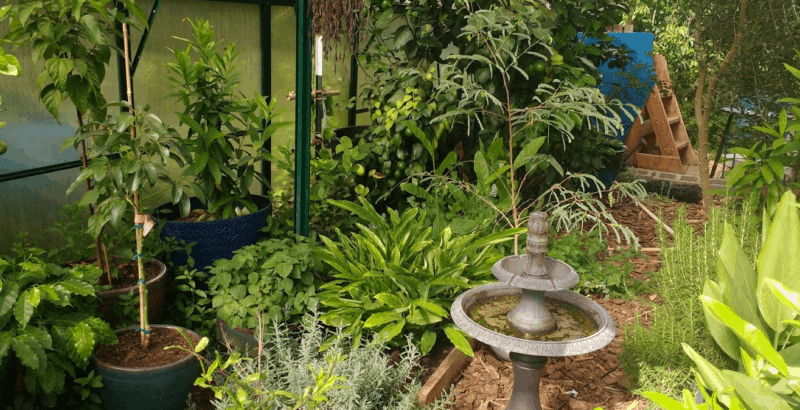
I love my greenhouse plants, but I have to tell you…they aren’t homesteaders! They’re not even remotely self-sufficient!
Plants that grow in less-than-ideal conditions only survive by establishing vast networks underground with bacteria, mycorrhizae, and rooting broadly over a large area to ensure access to nutrients and water.
In a greenhouse, though, we create ideal conditions precisely to prevent plants from needing to spend energy establishing these connections. That enables us to keep them in small pots and make them more productive using less space.
The downside is that those greenhouse plants become very ineffective at procuring their own nutrients from the soil. So, for optimal growth, they really need fertilizer delivered on-demand in water-soluble form.
Solution 1: Use Liquid Fertilizer
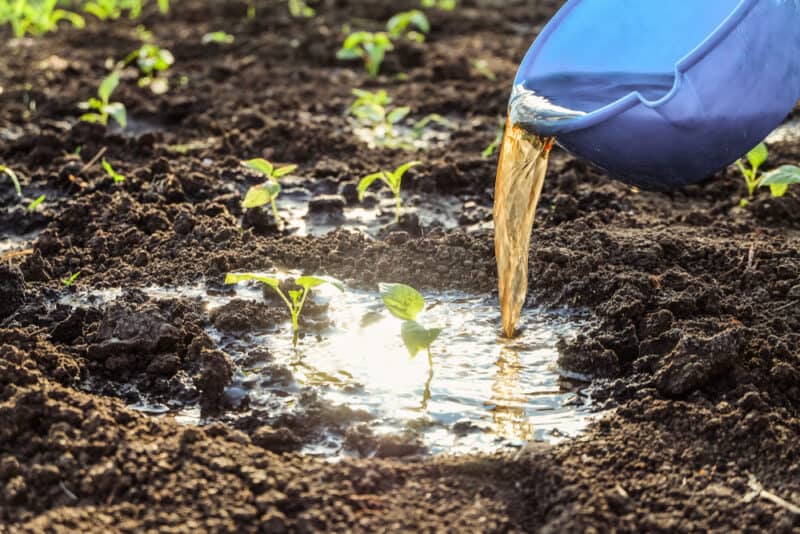
That’s why liquid fertilizers are generally better for greenhouse plants. They deliver nutrients to plants in a form that plants can immediately use.
Some growers also supplement feed with slow-release pelleted or granular fertilizers. However, overall, the key to maintaining plant health in your greenhouse is well-timed liquid fertilizer applications. These are usually administered on a regular basis when irrigating plants.
When it comes to liquid fertilizers, though, there are a lot of different methods to choose from.
– All-Purpose Synthetic Fertilizer
All-purpose liquid fertilizer is one option to consider. This is kind of like putting liquid 10-10-10 on your vegetable garden. Just like using balanced fertilizer in your garden normally leads to excesses of phosphorous and potassium in your soil, this generic approach can eventually lead to nutrient build-ups that harm plants.
Balanced fertilizers tend to be cheap and widely available so that makes them easy to obtain. Still, they can lead to costly plant losses and aren’t usually the best option for a greenhouse garden. However, for plants you only want to keep for short periods of time, before transplanting, it can be the cheapest solution.
– Targeted Synthetic Fertilizers
Most professional greenhouse growers use plant-specific synthetic fertilizers such as those targeted for vegetables, flowers, or trees and shrubs. You may also find specialty formulas like citrus fertilizer or azalea fertilizer.
These are a bit more expensive and may require special ordering. However, they get closer to giving specific plants exactly what they need nutrient-wise with less risk for nutrient toxicity.
With any kind of synthetic fertilizer, though, you always run the risk for salt toxicity since these are made from nitrates, such as ammonium nitrate. As such, you will periodically want to overwater your plants with plain water to leach out excess salts.
Solution 2: Use Organic Fertilizer
There are also a wide variety of organic liquid fertilizers.
– Store-Bought Organic Mixes
As with synthetics, you can buy all-purpose or plant-specific organic liquid fertilizers. These don’t run the same toxicity of salt risks as synthetics. However, they deliver lower quantities of immediately available nutrients and higher quantities of nutrients that will break down and become plant available later.
As such, just like using organic fertilizers in your outdoor garden beds, organic fertilizers rely on microorganisms in potting mixes to make them effective. As such, commercial organic fertilizers usually come packaged with mycorrhizal inoculant and effective microorganisms.
These additives are necessary for the fertilizers to be more effective, but they also make organic options more expensive to buy.
– Homemade Organic Options
You can also make your own organic fertilizers for your greenhouse. You can do this using compost tea to supply moderate doses of N-P-K as well as other trace minerals. Compost tea also delivers the microorganisms needed to make the nutrients available.
Then, for some plants, you may have to supplement your mix with things like blood meal for immediate release nitrogen. Or, perhaps, you’ll use a feather meal for some immediate release but mostly slow-release nitrogen.
Frankly, urine is also a great immediately available nitrogen source in the greenhouse. DO NOT put this in when you start making your compost tea though because it may contain pathogens that could reproduce during tea-making. Instead, dilute it and apply it concurrently with your already finished compost tea.
Challenge 3: Year-Round Gardening
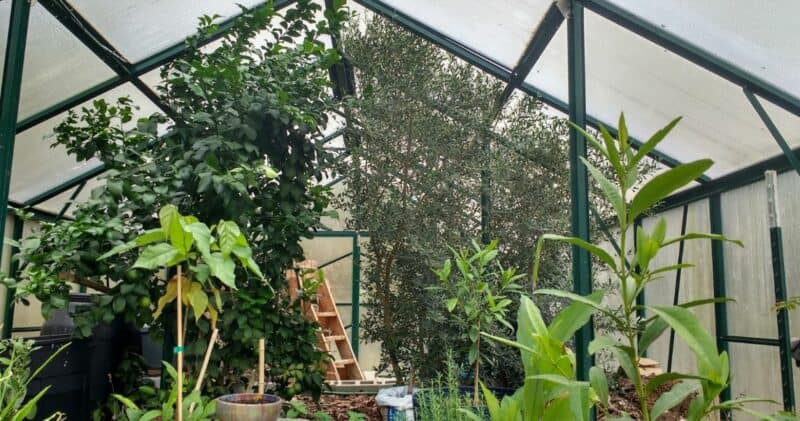
This last problem isn’t exactly a problem. It’s a benefit of gardening in a greenhouse. However, it can be a problem in terms of maintaining soil fertility for your greenhouse plants – especially for organic gardeners.
Soil microbes are temperature and light-dependent. Many of the microorganisms that help maintain the health of your plants slow their processes when soil temperatures fall below 55°F. Many may also go dormant as a result of reduced plant photosynthesis related to a shorter number of light hours in winter.
Unless your greenhouse soil temperatures stay above 55°F and you also provide supplemental light for 12 hours per day, organic fertilizers will be much less effective in winter. For some plants that naturally slow their growth rates when temperatures and daylight decreases, this may not be much of an issue.
For example, in my greenhouse, my arbequina olive never shows signs of nutrient deficiency in winter. However, my Meyer lemon that flowers and puts on significant leaf growth from January-March often show signs of nutrient deficiency in winter.
So, the extent to which the dormancy of microorganisms reduces your plant health depends on the plants you grow, soil temperatures, and your light conditions. You’ll need to account for your conditions in your winter fertilizing strategy.
Solution 1: Strategically Fertilize
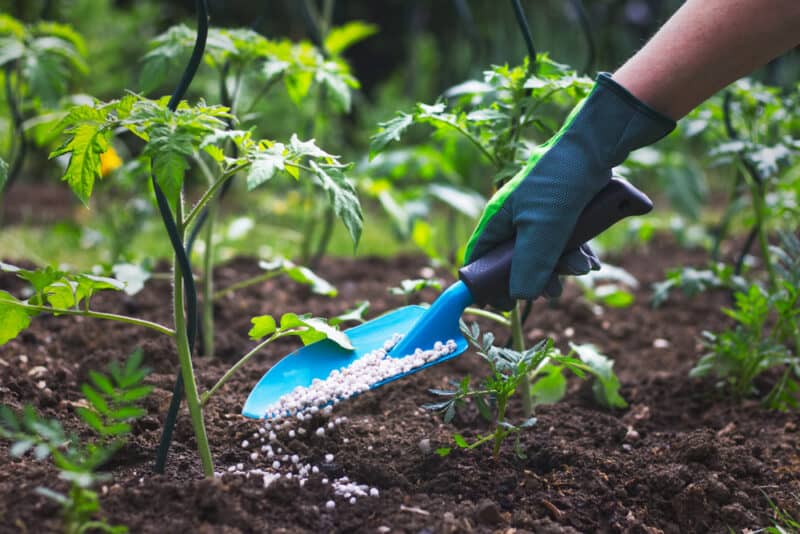
The easiest way to address this problem is to take time to know each of your plant’s winter fertility needs. Then, target your fertilizing appropriately.
For my olive tree, other than its annual top dress of compost and mulch in late winter, I don’t fertilize greenhouse plants until soil temperatures warm up. My lemon, though, needs regular applications of immediately available nitrogen and phosphorous.
Urine is my preferred nutrient source since it’s free and effective. However, if you are squeamish about using urine in your greenhouse, then you may want to relax your organic principles in winter for the sake of your plants.
Synthetic fertilizers will continue to work well even when soil temperatures decline and photosynthesis is reduced. That’s because they are not dependent on microorganisms to become bioavailable to the plant. They feed plants directly – rather than feeding the soil to feed plants as organic fertilizers do.
The Conclusion to How to Fertilize Greenhouse Plants
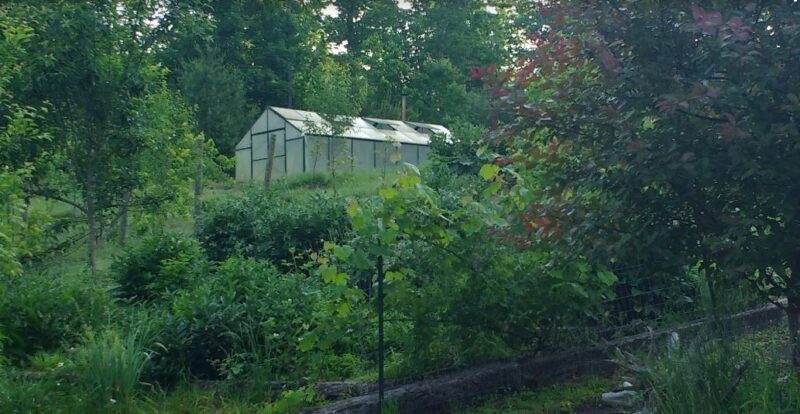
Fertilizing greenhouse plants, especially organically, is quite different than fertilizing an outdoor vegetable or perennial garden. You essentially become like the parent of many infants.
Those plants are completely dependent on you to meet their needs. Yet, if you take some time to understand your greenhouse plants and strategically address their needs – you can create efficient, cost-effective fertility plans that work year-round.
